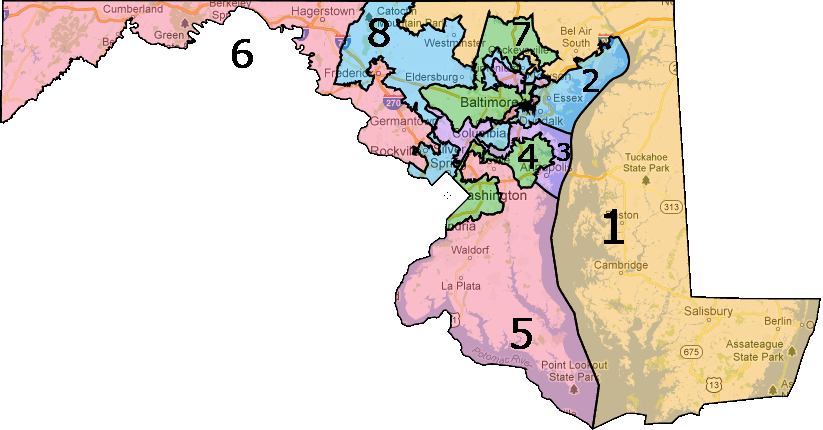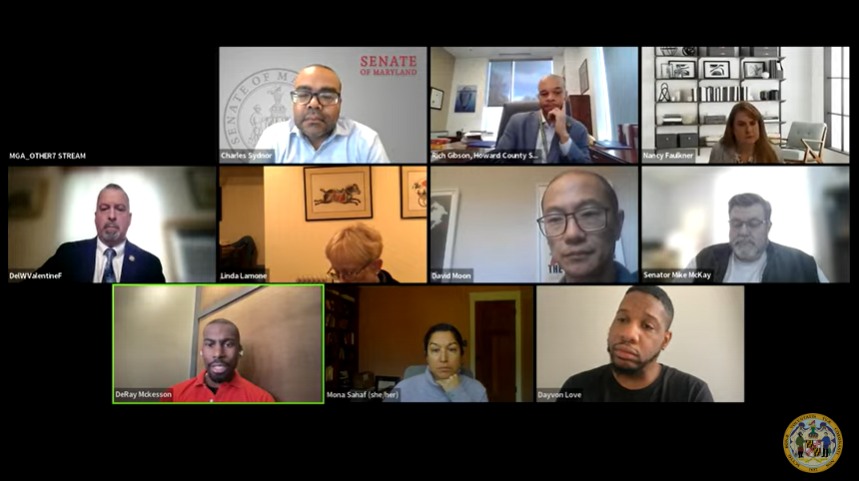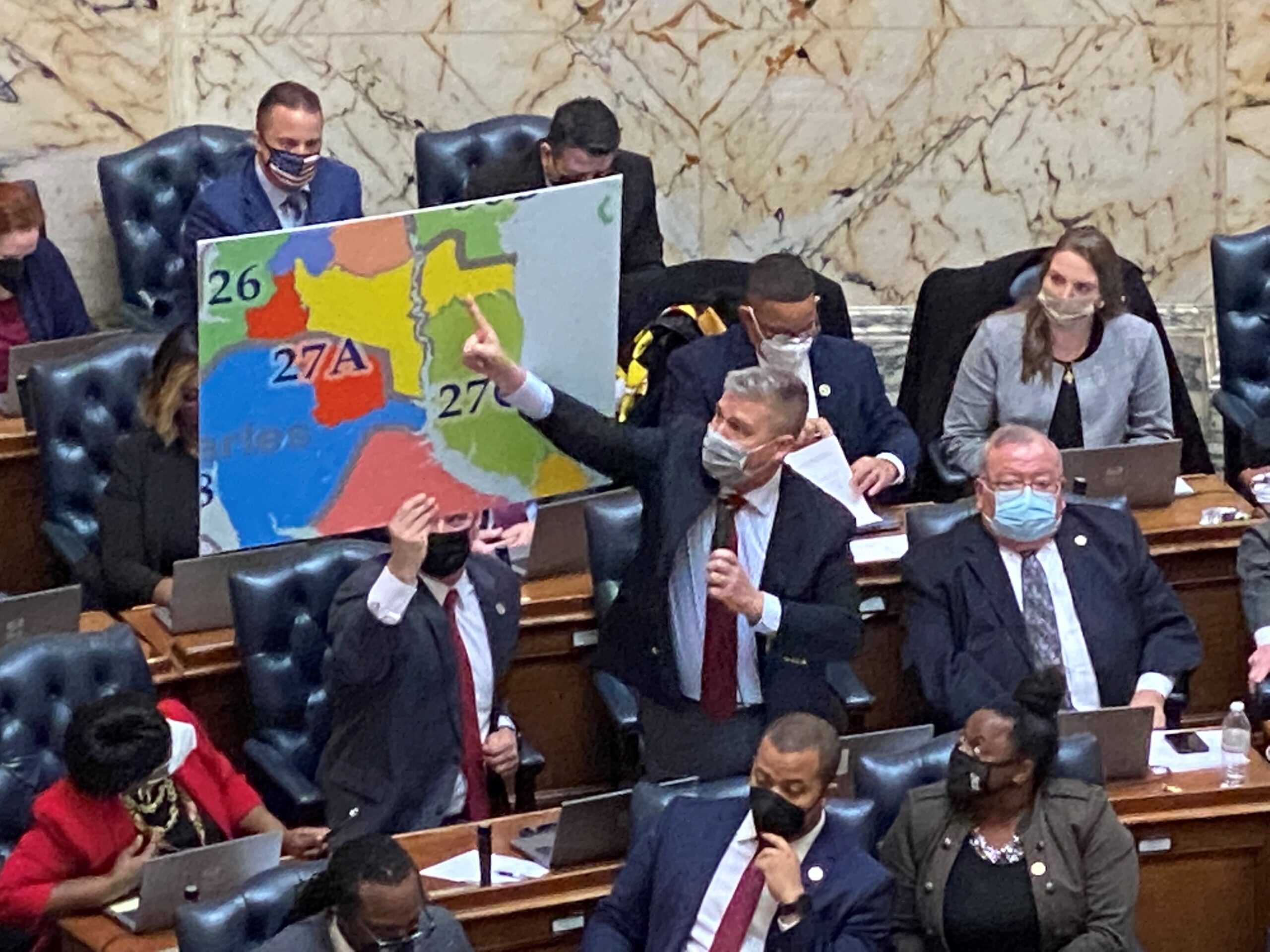Western Md. Shows Partisan Divide Over Congressional District Boundaries

Maryland’s 6th Congressional District was the subject of a lawsuit that made it all the way to the U.S. Supreme Court, and members of the General Assembly’s redistricting commission heard from local leaders and residents in Western Maryland Wednesday night about what the district’s new boundaries should look like.
The Supreme Court threw the question of partisan gerrymandering back to the states in 2019 as part of a lawsuit over the 6th District’s boundaries. At a Wednesday Legislative Redistricting Advisory Commission meeting, local leaders and community members discussed the district’s future.
Del. Michael W. McKay (R-Allegany) said Frederick County should be kept whole in proposed congressional maps. Since the last round of redistricting after the 2010 Census, the county has been split between the 6th District, which captures the southern area of the county as well as the City of Frederick, and the 8th District, which includes the rest of the county as well as portions of Montgomery and Carroll counties.
“Like communities should be together as much as possible,” McKay, a candidate for state Senate in 2022, said.
Republicans went to court seeking to overturn the 6th District boundaries following the last redraw a decade ago, when the newly-configured district flipped from Republican control to Democratic control.
But Democrats who testified at the hearing spoke in favor of the 6th District as it’s currently drawn. Brian K. Grim, the former mayor of Cumberland and chair of the Allegany County Democratic Central Committee, said the district has a “firm historic precedent.” As it does now, it took in part of Montgomery County in addition to most of Western Maryland for many decades.
Grim was critical of the way the 6th District was drawn in the early 2000s, when it spanned from the furthest western portions of the state all the way to northern Harford County.
“It was created as a more compact, neighborly and cohesive district than what was created in the early 2000s across the north of Maryland,” Grim said at the meeting.
Peter Perini, a member of the Washington County Democratic Central Committee, likewise approved of the current 6th District configuration. He also urged the commissioners to keep a single-member delegate district around Hagerstown in their eventual legislative maps.
Sen. George C. Edwards (R-Garrett) and McKay both urged commission members to decrease the size of the state’s 1st Senate District, which currently runs from the state’s western border in Garrett County all the way to just west of Hagerstown. Edwards and McKay both noted that lawmakers have more leeway in determining the population of state legislative districts compared to congressional districts.
Edwards also voiced his support for single-member legislative districts. The state currently uses a hybrid model that includes both single and multi-member delegate districts. The 1st District, which Edwards represents, is split into three separate single-member delegate districts. The 2nd District, which includes eastern Washington County, is split into a single-member district around Hagerstown and a two-member delegate district that covers the rest of the 2nd District. Other districts are entirely multi-member with three delegates.
“That’s really the fair approach,” Edwards said of single-member districts. “That way you’ve got someone representing a smaller segment of that larger population.”
Genie Massey of the Maryland League of Women Voters urged commission members to be transparent in their mapmaking, and even consider drawing up maps in public and accepting maps from the public. The Maryland Citizens Redistricting Commission, created by Gov. Lawrence J. Hogan Jr. (R), brought on national redistricting expert Nathaniel Persily to help draw up congressional and legislative districts, and has hosted public working sessions to discuss and draw those districts.
“The effects of gerrymandering in 2011 have made it harder for those in Western Maryland to look at anyone in Annapolis with trust,” Massey said.
The Legislative Redistricting Advisory Commission was convened by Senate President Bill Ferguson (D-Baltimore City) and House Speaker Adrienne A. Jones (D-Baltimore County). In addition to Jones and Ferguson, the commission includes Senate President Pro Tempore Melony G. Griffith (D-Prince George’s), House Majority Leader Eric G. Luedtke (D-Montgomery), House Minority Leader Jason C. Buckel (R-Allegany) and Senate Minority Leader Bryan W. Simonaire (R-Anne Arundel). Karl Aro, a former top legislative staffer who has gone through several rounds of redistricting, is the commission chair.
The General Assembly, where Democrats hold a veto-proof majority in both the House and Senate, will have the final say over the state’s next set of congressional and legislative maps.
The next meeting of the Legislative Redistricting Advisory Committee will be Thursday at Anne Arundel Community College in Arnold.





 Creative Commons Attribution
Creative Commons Attribution